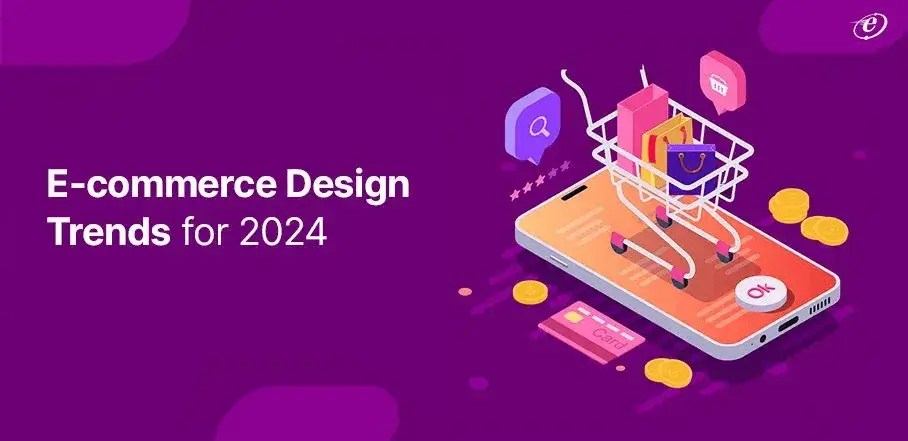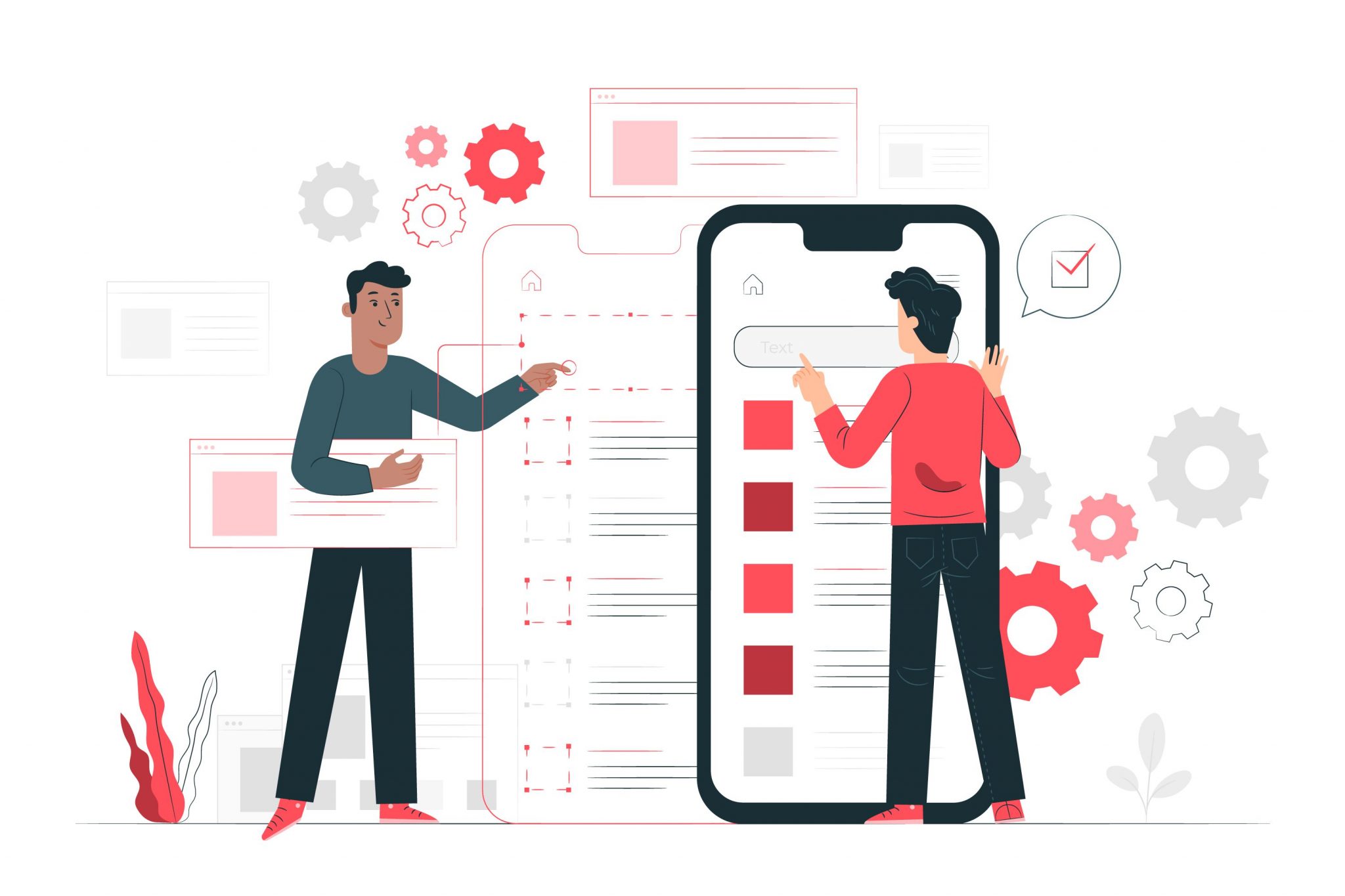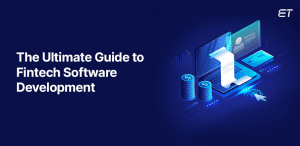Businesses are getting increasingly bold and imaginative with their strategies as everyone wants to start their recovery journey in 2022. Ecommerce isn’t what we’ve always thought of it to be. It has evolved into a dynamic online shopping experience that reflects the needs, wants, desires, and even thinking of its customers.
We hope that these trends we have listed here will help you stay ahead of the curve and motivate you to build highly functioning and user-friendly e-commerce websites. If you fall short in some way, you can hire frontend developers to get the most out of these trends.
Vertically aligned menus
For a while now most businesses have used a horizontal menu as their website’s default. After all, ecommerce platforms were once reserved for computers with wide screens, such as desktops and laptops. This is fast changing, as mobile phones now account for 68% of online visits. Ecommerce systems must now be mobile-friendly as well.
While businesses began developing responsive websites that adapt to different screen sizes, it quickly became clear that some horizontal menus don’t perform well on small mobile displays. You may have seen an increase in the number of ecommerce websites with vertically oriented menus as a result.
Source: Freepik
A vertical menu saves space and is easy to resize because it may be placed on either side of the page. When viewed on a desktop, a vertical menu allows you to provide navigational links without interrupting the body of your website with a drop-down menu. A vertical menu, which resembles a list, acts as an effective guide for consumers on how to navigate your page smoothly.
Simply stated, vertically oriented menus are easy to use and understand. More and more websites are now starting to integrate horizontal and vertical menus for key and secondary navigational links. This method makes the most of the available space while also providing a distinctive contrast to the typical navigation displays, we’ve gotten used to expect.
Source: The message to Ukraine
A layout assists in the beautiful and practical arrangement of content on a website. For this, many companies use ecommerce systems like Shopify. These usually provide a collection of common design templates based on a small number of structures, such as the single-column layout or the F-layout. The issue with these is that, while they’re simple to set up, they’ve grown so prevalent that they no longer provide consumers with a sense of surprise.
Some companies are breaking the pattern and thriving on peculiarity by using unusual layouts. Like a well-curated sophisticated art museum with infinite scroll, their websites, applications, and online pages blend themes into their layout. Some mix many components, such as interactive videos and animated pictures, to create an engaging experience. What are the most likely outcomes? User engagement is longer, brand retention is better, and conversion rates are higher.
Tip: Breaking standard techniques and extending your creative boundaries will help you stand out. The purpose of a layout is not only aesthetics. Consider your layout design as a chance to communicate the narrative of your company.
Also read : Trends that will shape E-Commerce App Development for 2022
Blurring Boundaries the Physical and Digital
As a result of the pandemic’s restriction of many people staying indoors, companies have turned to ecommerce sites to replace customers who used to shop in brick-and-mortar stores. With the gradual return to normalcy, the demand for platforms that allow for both digital and physical contact will continue. A Custom web application development company can help your organization bridge this gap with their years of evolving experience working with multiple brands.
Aside from e-stores and e-commerce websites, apps for just any purpose have grown in popularity in response to user needs for ease and outstanding digital customer care. When compared to shopping in stores, these platforms eliminate a few more stages from the customer’s trip. A physical store, for example, would need travelling to the store, shopping in a crowded environment, and standing in a long queue to pay for your purchases.
Businesses may use this new ecommerce design trend to check if items are in stock in their local stores, schedule appointments, and pay their bills digitally. They may also incorporate live assistance via chat or video conversations to provide better customer care. Apps may do wonders for a business and its end-users in today’s smartphone-dependent industry.
Sophisticated voice user interfaces
Do you want to add a new level of ease to your business? Use AI technology to your advantage. You can hire dedicated developers to help you with that.
Businesses are starting to see the value in incorporating AI technology into their ecommerce systems via a voice-activated user interface. Giving consumers someone to help and converse with produces a customized and highly efficient user experience: imagine having your own personal store clerk or secretary at home.
Start by incorporating voice user interface into your UX design and investing in voice search optimization for your ecommerce website to achieve this. People who use voice search ask in whole sentences, but those who use text search ask in phrases.
You must incorporate keywords and material that are “verbally” noticeable, just like you do with search engine optimization. With this in mind, you may use keywords in the form of queries or use keywords that appear on Google’s highlighted snippets—also known as position zero or material that appears above the first search result—to name a few options.
As AI technology advances, more individuals will be able to benefit from it. With only a single voice command or voice search, products and services are becoming increasingly accessible. According to Microsoft survey data, 72 percent of participants use digital assistants such as Siri, Alexa, Google Assistant, and Cortana. Shopping for groceries, making appointments, and other mundane tasks have all been automated thanks to AI.
The holistic Experiences
Capturing the market with varied needs is difficult with over 500,000 businesses and billions of ecommerce customers globally. This implies that, in order to be competitive, large corporations must expand their offerings to become a one-stop shops.
Larger online businesses may benefit from Facebook. They are currently growing into social technology after acquiring many social media platforms in addition to Facebook. As a result, the company was renamed Meta. As Meta grows in popularity, more people are expected to adopt it for their social media and social technology demands.
Amazon, the world’s largest ecommerce corporation, has gone from selling products across various segments to delivering Amazon Web Services. Ecommerce firms may prosper and grab a wider market by diversifying and introducing new items and expanding into related markets.
Increased Personalization
Many businesses united to assist the COVID-19 response as a result of the outbreak. Numerous businesses have embraced a double bottom line strategy, in which they operate not just for financial benefit but also to have a beneficial social effect. Companies that have sponsored donation drives, meal initiatives, and handed out large discounts are just a few examples. Doing good is good for business, as the saying goes.
Creating a personalized experience has developed to showcase thoughtfulness and empathy as one of our key ecommerce design themes this year. Allow customers to unsubscribe from getting or seeing any web content connected to specific holidays they may not want to celebrate. This form of activity demonstrates your business’s human side to people while also communicating true brand values. It also increases trust by customizing their experience.
Source: Freepik
Appeal to the senses
While advanced technology such as virtual reality may considerably enhance a multi-sensory digital experience for ecommerce platforms, there are less difficult approaches you can use. Colors, gradients, superbly captured photographs, stylistic typography, and the use of abstract but interactive shapes in your layout all work together to create an atmosphere.
Sound effects, such as a gratifying ‘ding’ when you click on a button to complete a purchase, could be added to enhance your UI (user interface) design. You might animate hover effects, for example, if your site has a backdrop image of the ocean, you could create a sound and motion view of the waves crashing whenever a user hovers over it.
This is particularly useful for accessibility purposes, since you can utilise music and visuals to navigate users around the site. Aside from that, you may use thought-provoking descriptive and appealing prose to complement your visual material and immerse your customers in the design.
It’s ideal to choose high-quality images that reflect how you want customers to react to your business when choosing pictures. A mouthwatering sauce and a dish of roasted meat on a culinary website might make someone hungry. The skin product applied to a person’s face has a creamy and silky feel that may appeal to someone looking for a delicate and highly moisturizing skin product. As you can see from the examples above, a website’s minimalist design may convey a clean, real, and current sense that complements product packaging.
From ecommerce to green ecommerce
Online shopping allows you to shop from anywhere, saving you time and money on transportation and travel costs. It also means allowing you to conduct a good deed for the environment. According to the United Nations, limiting outdoor activities in certain countries, such as Southeast Asia, resulted in a massive 40 percent reduction in air pollution. While the environment benefited from lower pollution levels during lockdowns, the demand for single-use plastics has increased.
To fight this, there is a market change underway, with customers becoming more eco-conscious and demanding brands they buy to be responsible for their environmental effect. Over 60% of Americans prefer to shop from environmentally friendly products, and this desire has given rise to green ecommerce. This is a term used to describe a trend of companies implementing green solutions into their operations.
This entails using environmentally friendly products such as bioplastics, paper utensils, reusable packaging and other non-toxic materials. In order to decrease packing, brands are aggressively urging customers to forego same-day delivery and combine their purchases. You may also expect more parcel delivery firms to use electric cars and bicycles. Governments are echoing this sentiment by intensifying their attempts to phase out the sale of gasoline and diesel automobiles between 2030 and 2035.
Product returns from online retailers are yet another concern. According to Statista, return shipping costs have surpassed $500 billion because items supplied do not fulfill consumers’ expectations based on information from the website. With this in mind, firms are becoming more responsible by including complete product descriptions, genuine product photographs with in-depth data, and feedback and comment areas on their websites. This provides purchasers with all of the information they require before confirming their orders, lowering the likelihood of returns.
Also read: 7 Ways to Improve Your Ecommerce Store During Covid-19
Modern businesses turn headless
Smart voice assistants and virtual reality are just a few of the remarkable platforms and features that have resulted from technological advancements. While having numerous platforms might help you expand your reach, integrating them into one system can strain your server’s management, not to mention be time-consuming and difficult.
Enter, headless commerce.
The process of detaching the different user interfaces (front-end) from the server-side is known as headless commerce (backend). This lets you to efficiently stack essential services in your digital ecosystem—websites, microsites, various applications, and VR or AR features—design, and tweak them while keeping your backend intact.
Without having to depend on software engineers, any critical component can be easily modified and updated. As a result, headless commerce gives you the freedom to scale up and fulfill your consumers’ ever-increasing expectations on time, resulting in a consistent user experience across all channels.
Nike, Target, Redbox, and Annie Selke are some of the well-known brands that have adopted a headless commerce strategy.
Nike, in particular, has created an AR-powered app feature to dissuade resellers who utilize bots to obtain limited-edition merchandise using React SPA and Node.js, interface-building tools. Additionally, the function expands their market reach among mobile consumers while also providing an engaging experience.
People may go to Chef David Chang’s Momofuku restaurant and point the camera at a physical menu to purchase the model they want, thanks to a cooperation with Nike and the Nike App. Those who couldn’t make it to the restaurant may still get their hands on the limited-edition sneakers by aiming their camera at the menu on the internet or through SNKRS-powered posters.
Nike has also introduced an AR-powered software that correctly scans your foot, allowing you to avoid any missteps and acquire the perfect size. This also implies that Nike will have less product returns, which can’t be a terrible thing.
Also read: What is Headless Commerce & How Can It Help Your Ecommerce Business
Leverage your full potential
The ever-changing ecommerce world might be intimidating. But one thing is certain: ecommerce has a bright future. With a projected retail ecommerce sales of over $1 trillion in the United States by 2022, the competition may be fierce yet profitable. Implement these ecommerce design trends to enhance your game and navigate your path to success.
Have a look at this link to elevate your E-commerce Journey.
Digital Marketing Manager
Responsible for developing and managing web presence, Sarah has been associated with eLuminous Technologies for 7+ years. Strategic and innovative with a passion for Content Marketing and enhancing brand awareness. Administered all business marketing operations and advertisement campaigns that eventually increased web traffic. She works under the motto “Think like a Publisher, not a Marketer.”






